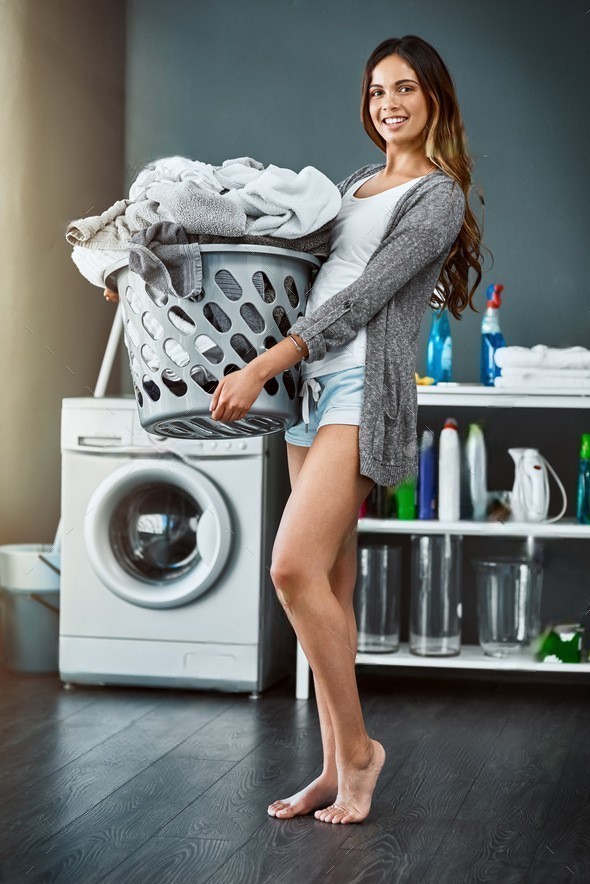Laundry chutes, those convenient slides that allow you to easily send dirty clothes from an upper level down to your laundry room, are indeed legal installations in most areas.
However, as with any structural addition or modification to your home, there are regulations, building codes, and safety guidelines to consider before installing a laundry chute. When done properly and within code though, laundry chutes can be incredibly handy additions in multi-story homes.
The Benefits of Laundry Chutes
There are many benefits to having a laundry chute in your home. First and foremost is the sheer convenience – no more lugging heavy baskets of dirty clothes up and down stairs to the laundry room. Simply toss them down the laundry chute and they’ll end up right where they need to be, without straining yourself carrying them.
Saves Time and Energy
This saves a ton of time and energy, especially if you have young kids. They can quickly send their dirty clothes down the chute as needed, instead of letting them pile up in hampers or on the floor upstairs. It also prevents you from putting off doing the laundry since it’s now so easy to transfer clothes to the laundry room.
Laundry chutes also keep your home tidier and less cluttered. There’s no piles of dirty clothes stacking up and taking over sections of bedrooms or upstairs hallways when there’s a quick slide available anytime. This can make home organization much simpler.
Prevents Stains from Setting
Additionally, a laundry chute prevents stains from setting in. The faster you can get those grass-stained jeans or spaghetti-sauce-soiled shirts to the wash without laying around other items, the better change you’ll be able to remove pesky spots. Laundry chutes let you do this quickly and efficiently.
Great for Large or Multi-Generational Homes
Finally, laundry chutes are incredibly useful additions in large homes with multiple levels or generations living under one roof. Kids can use them independently to send clothes, parents finishing a load upstairs can easily send items down, grandparents in first floor bedrooms can utilize them. They make laundry transport so much simpler in bigger households.
Building Codes and Regulations
When installing a laundry chute, you do need to follow some guidelines and regulations to ensure safety and proper structure. Building codes regarding laundry chutes focus on the following areas:
Fire Safety
Fire safety is the number one concern, as an open vertical chute could allow fire and smoke to quickly spread upwards through a home. As such, codes require newly installed chutes to use self-closing, tight-fitting fire doors rated at a minimum of 20 minutes fire resistance at the top and bottom. This hinders spread of flames.
Additionally, chutes must be constructed of non-combustible, flame resistant materials like 16 gauge steel or thicker metal. Any higher fire hazard materials like plastic or wood are prohibited. Openings must be limited to laundry transfer only to contain fire risk. Following these guidelines contain potential fire spread.
Structure and Installation
There are additional building codes related to actual construction and installation to ensure safety and proper function. Qualified professionals should install chutes as structural considerations like wall integrity, joints, vibration transmission, and noise abatement need addressed. Load ratios and limitations also must be followed to prevent collapse or detachment.
You also cannot install a laundry chute through existing firewalls in your home, and openings require sealed with non-combustible materials. Proper ventilation systems above and below may also be mandatory as part of installation. Always check your local building codes to ensure compliance.
Accessibility
As laundry chutes have openings from one level to another of a home, building codes also look at accessibility concerns should someone accidentally fall into the chute. Safety standards require the area surrounding openings have guardrails at minimum heights, and chutes themselves to be too narrow for a person to fit through (usually under 22 inches wide).
There also needs to be enough space and structural support so an adult could not inadvertently stumble into or through the opening. These codes prevent injury accidents.
Tips for Safe Laundry Chute Installation and Use
As long as you follow building regulations and use common sense, laundry chutes can be incredibly convenient and safe additions in your home. Here are some extra tips for maintaining safety:
- Have children use the chute only under adult supervision initially until they display proper care and handling when depositing laundry.
- Avoid overloading the chute which could lead to clogs or damage. Send items down one at a time.
- Secure all openings with tight-fitting child safety devices when not in use to prevent fingers getting pinched or items accidentally knocked down.
- Ensure laundry chutes remain free of lint and debris buildup by periodically inspecting and cleaning.
- Do not allow or attempt to pass any objects beyond clothing down the chute to prevent jams or other issues.
- Make sure laundry chute doors are always securely propped open before use and properly closed after to prevent fires.
Following common sense rules and building guidelines means laundry chutes pose no increased safety risk and are incredibly legal and convenient improvements.
References:
International Residential Building Code on Laundry Chutes: https://up.codes/viewer/international/irc-2021/chapter/3/building-planning#R320.1
Overview of Laundry Chute Building Codes for Fire Safety: https://www.nfpa.org/News-and-Research/Publications-and-media/Blogs-Landing-Page/NFPA-Today/Blog-Posts/2022/03/23/How-Do-Laundry-Chutes-Impact-Fire-Risk
Tips for Safe Laundry Chute Installation and Use: https://www.bobvila.com/articles/laundry-chute-safety/

Laura has had an enthusiasm for laundry ever since she was a teenager experimenting with wash cycles. She went on study textile science in college before working in product testing.
Soon, Laura found friends and family constantly asking her laundry advice, realizing she had become an unofficial laundry guru. The questions kept coming in, so Laura decided to start sharing laundry tips online to help more people. The enthusiastic response led her start the blog “Laundry How”.
Now in her late thirties, Laura uses Laundry How to tackle all kinds of laundry topics – stains, fabric care, detergents, and more. She provides advice from both her studies and experience testing techniques out firsthand. Laura continues to grow an engaged community of laundry learners, feeling fulfilled empowering people to make laundry an easy, confidence-building ritual rather than a dreaded chore.
